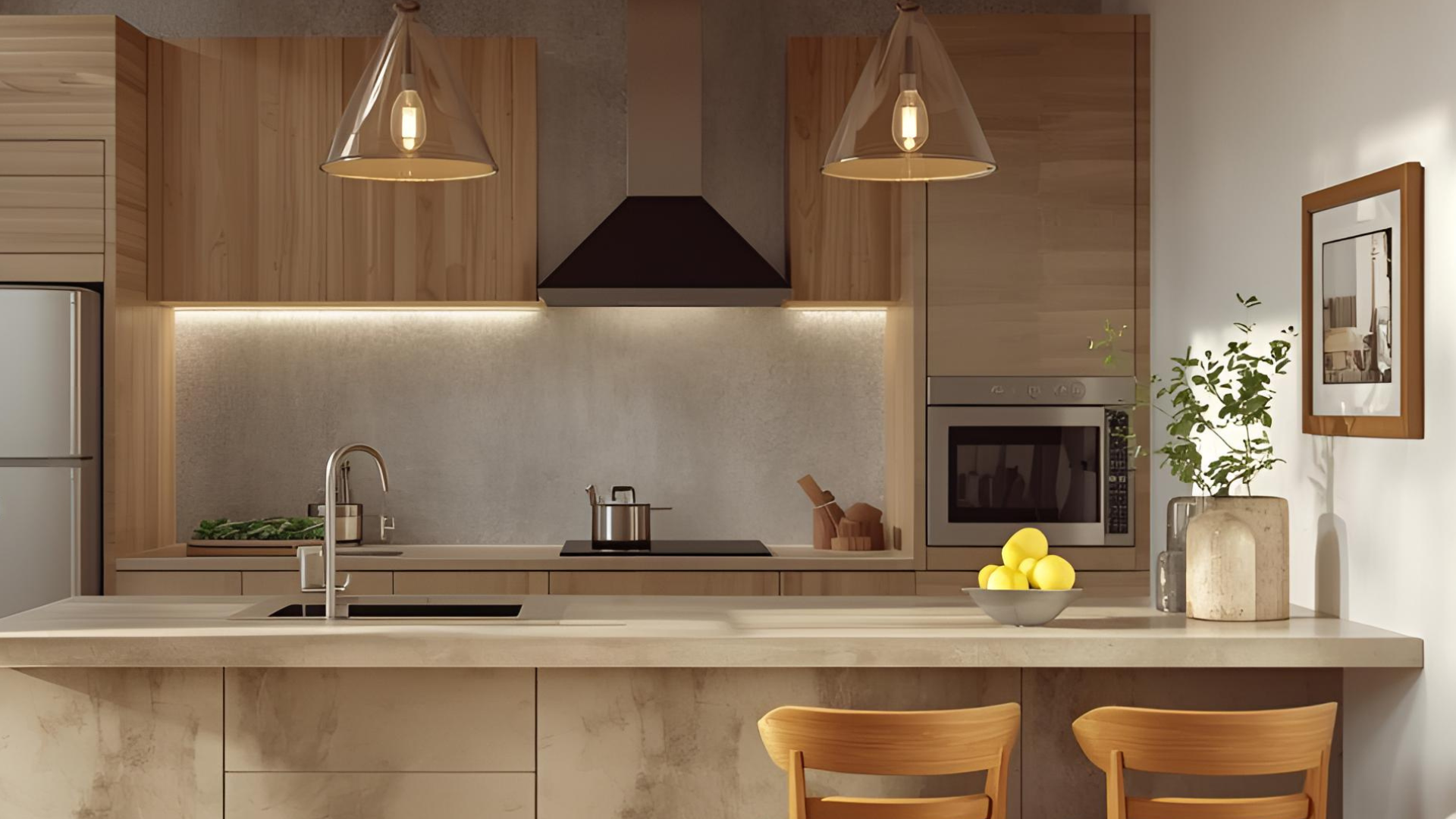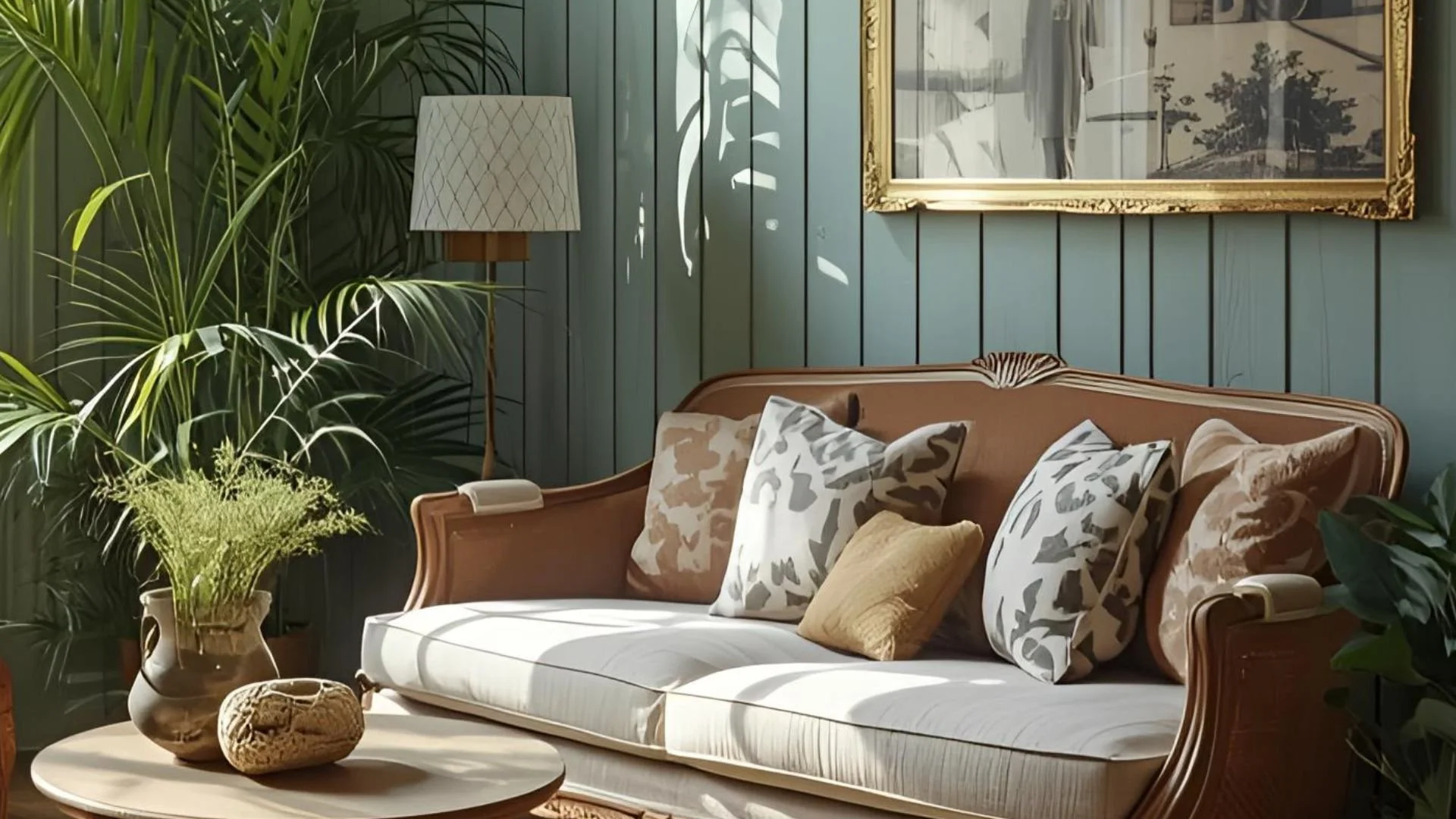How to Create a Home You’ll Love for Years (Not Just a Season)
As October’s softer sunlight drifts through your windows and the urge to nest—to cocoon, re-arrange, and reflect—grows stronger, it’s tempting to chase the next decor fad. But what if your home could transcend trends and seasons? What if your space could evolve with you, maintaining both beauty and purpose through years of change?
This post explores how true sustainability begins not with annual décor updates, but with design that honors durability, health, and adaptability. We’ll guide you through principles and practical ideas for a home that stays beautiful, functional, and wellness-forward through the seasons and years ahead.
1. Start with a Solid Foundation: Structure, Layout & Lighting
Before upholstery or art, the bones of your home set the stage for longevity. Plan for flow, flexibility & future changes.
Use modular furniture or pieces that can be reconfigured as your lifestyle shifts.
Avoid over-customizing built-ins that limit flexibility (e.g. a built-in desk sized only for today’s use).
Think about circulation paths, how light moves, how rooms connect — a well-planned layout ages gracefully.
Maximize natural light & control. Design windows or skylights for daylight harvesting; natural light supports mood and reduces energy usage. Use layered window coverings (sheers + blinds) to adapt across seasons (solar heat gain, privacy, glare). Integrate dimmable, layered lighting (ambient / task / accent) so evening lighting can age with your décor. Need more ideas? Contact Go Green Fine Interiors for more information on designing your space.
Invest in durable infrastructure. Choose long-wearing finishes for high-traffic zones (e.g. hardwood or sustainable-engineered wood floors, high-quality stone, or terrazzo). For walls, consider textured finishes (wood paneling, plaster, grasscloth) rather than flat paint, which can feel too “fresh” and trend-driven. Use quality windows, doors, and hardware—better insulation, sound control, and longevity matter.
2. Material Choices That Grow With You
The best materials don’t just last — they evolve. Sustainable design means choosing finishes and furnishings that adapt to your lifestyle, can be repaired or renewed, and become more beautiful with age. These choices reduce waste, conserve resources, and make your home more personal over time.
Prioritize adaptability:
Choose materials that can be repaired, refinished, or reupholstered instead of discarded.
Select modular pieces that can be rearranged or updated as your needs evolve.
Seek out circular products:
Look for manufacturers offering take-back or recycling programs for flooring, tile, or textiles.
Consider materials made from post-consumer waste, like recycled glass or reclaimed composites.
When your materials are designed to grow with you — not work against you — your home becomes a living reflection of your values: resilient, adaptable, and beautifully sustainable.
3. Design for Wellness & Health
A lasting home supports both physical and mental health. Even with low-tox materials, indoor air can accumulate dust and humidity over time, so clean air and natural elements are key to a balanced space.
Prioritize indoor air quality:
Install air-exchange or heat-recovery ventilation
Use HEPA or activated-carbon filtration
Add smart air monitors to catch issues early
Periodically assess furnishings and finishes for hidden toxins
Bring the outdoors in: Biophilic design boosts mood and reduces stress. Try green walls, large plants, and natural materials like wood and stone — all of which age gracefully and evolve with your home.
Choose health-forward materials:
Use low-VOC flooring such as FSC-certified wood, cork, or polished concrete
Switch to plant-based cleaning systems
Opt for natural bedding and mattresses free of synthetic chemicals
By designing with wellness in mind, your home becomes more than a place to live — it becomes a space that restores, inspires, and endures. Interested in learning more? Contact Go Green Fine Interiors for more sustainable options that can elevate your space.
4. Timeless Furnishings, Not Fast Trends
Once your home’s structure and materials are thoughtfully chosen, the way you furnish it will define your daily comfort and long-term satisfaction. Prioritize furniture and décor that stand the test of time — both in quality and style — rather than following fleeting trends.
Invest in quality craftsmanship: Choose heirloom-grade or artisan-made pieces that can adapt and endure for decades.
Opt for modularity and reversibility: Select furniture that can be reupholstered, rearranged, or repurposed as your needs and tastes evolve.
Layer with changeable accents: Keep your foundational pieces neutral and refresh your look with easily swappable elements like art, rugs, and pillows.
Celebrate natural wear: Embrace the beauty of patina on metal or scratches on solid wood — signs of life that add character rather than detract from it.
When your base is timeless and durable, even small design updates feel fresh and effortless — creating a home that evolves gracefully with you.
5. Maintenance & Adaptation: Your Role After Design
A “forever home” only truly lasts when you nurture it over time. Treat your home as a living system — one that needs care, flexibility, and thoughtful choices to thrive alongside you. Regular upkeep and mindful decisions ensure that your space continues to support both your lifestyle and the planet.
Keep a maintenance rhythm:
Refinish and reseal wood floors as needed
Clean filters, check ventilation, and manage moisture
Refresh protective coatings on high-use surfaces
Rotate rugs, cushions, and artwork to prevent uneven wear
Allow for change: Revisit how your rooms function every few years. A well-designed home should evolve with you — whether that means turning a bedroom into a home office or expanding a living area to suit new needs.
Be intentional with additions: Before bringing something new into your home, ask if it aligns with your material palette, health goals, and overall flexibility. If it doesn’t fit, let it go.
Sustainability isn’t just a design trend — it’s about honoring what already exists and making choices that minimize waste
Final Thoughts: A Home That Grows With You
When you invest in thoughtful design, you’re not just decorating—you’re curating an environment that tells your story. A timeless home reflects your values, celebrates craftsmanship, and embraces a slower, more intentional rhythm of living. It becomes a space where beauty, comfort, and purpose coexist effortlessly—reminding you daily that sustainability isn’t a sacrifice; it’s a luxury that lasts.
Perhaps most importantly, creating a home you’ll love for years means leaving a positive legacy. Every non-toxic finish, reclaimed wood beam, or energy-efficient fixture becomes part of a quieter revolution—one that respects both people and the planet. When your home aligns with your lifestyle, wellness, and environmental goals, you create something enduring: a sanctuary that feels just as right tomorrow as it does today.
🍂 Ready to Take It to the Next Level?
Let’s work together to make sustainable, beautiful choices for your home.
Want help curating a space that reflects your personality, values, and is good for the enviornment? Contact us for a custom design consultation.
💬Let us know: What is your go-to sustainable design tip?
📩 Contact Go Green Fine Interiors for your next project!






